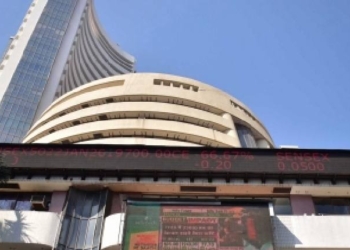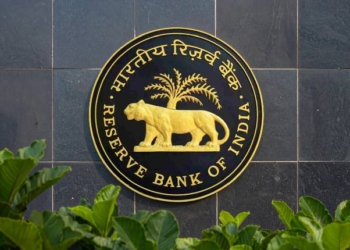New Delhi: The MPC decided to keep all rates on hold and retained the stance as ‘withdrawal of accommodation’. The rate decision was unanimous while the stance had the expected dissent from Prof. Varma.
Additionally, from the fortnight beginning August 12, the RBI has levied a temporary incremental cash reserve ratio (I-CRR) on banks of 10 per cent on the increase in their net demand and time liabilities (NDTL) between May 19 and July 28. The measure will be reviewed on September 8 or earlier with a view to returning the impounded liquidity to the banking system ahead of the festival season.
Background
On the whole, the policy today comes as a relief to the market. While the consensus was for no action or stance change, there were creeping fears that these benign expectations will be belied given recent context. As is well known, there has been a massive spike in tomato prices over the past few weeks. Largely led by this, but also to some extent on the back of incremental pressure from other vegetables, cereals, and fruits, headline inflation is expected to surge by 150 – 200 bps in July versus the June print. August may also rule comfortably above 6 per cent and relief may come only from September. Furthermore, international commodity prices also have been on an upswing lately with notable moves in oil prices over the last few weeks.
The Governor had emphasised the 4 per cent CPI target in the June policy review and the bias for further action was very much in evidence even then. This was before some of the adverse developments on inflation as described here had begun materialising. Thus, market fears of some surprise action were more than justified. The actual outcome thus counts as a bit of a breather.
Forecasts
Forecast changes in light of short term changes in inflation dynamics, are summarised below. The most notable change is for the current quarter reflecting the near term pressures from the vegetable price spike. Also, the forecast for Q1 FY 25 is now in place.
Assessment
The RBI continues to draw comfort from the robustness of local growth while being watchful of spillovers emanating from weak external demand and protracted geopolitical tensions. On inflation, the Governor notes that core inflation has softened by more than 100 bps from its recent peak in January 2023. However, given recent spikes in tomato prices and further increases in prices of cereals and pulses, a substantial increase in near term inflation is being flagged. Nevertheless, the RBI / MPC expresses patience given that going by past trends vegetable prices tend to correct significantly after a few months. Also prospects of kharif crops have brightened owing to improvement in monsoons. However, uncertainties remain due to looming EL Nino conditions, and from hardening global commodity prices. Also recurring food price shocks may have a bearing on inflation expectations. Thus while monetary policy is willing to look through high inflation prints caused by short term shocks for some time, also because significant work has been done already with the 250 bps hikes done so far still feeding into the system, there is also a clear focus to stand ready to act again if so required. That warning is clear in both the Governor’s and the MPC’s statements.
The I-CRR move is temporary, meant to address the surge in liquidity owing to a host of recent reasons including the return of 2000 banknotes, RBI’s surplus transfer to the government, pick up in government spending, and capital flows. One does get the sense, however, that had banks been more receptive of longer term VRRRs then the RBI may perhaps have been more patient with the deploying the I-CRR tool. Having said that, the Governor has taken care to flag that the deployment is temporary and should be revoked ahead of festival season. With circa Rs 250,000 crores of currency in circulation drain pending for the rest of the financial year, our own estimates also suggest that the ‘excess’ core liquidity is a temporary problem. Even here, the I-CRR announcement comes as a relief to the tail risk in market expectation of a more permanent measure that would have turned out to be far more disruptive.
Going Forward
Bond yields have risen reflecting the movement in global bond yields as well as our own recent food inflation dynamics. The policy today soothes some concerns on the margin but these haven’t been entirely taken away yet. The market, alongside the RBI, will look at the evolution of food prices with a view to deciding whether October may well throw in a last rate hike in this cycle. While on the subject, the Governor also mentioned in the post policy press conference that should actual policy tools need to get deployed, these tools are not just in terms of rate and stance but there are other ways of dealing with this as well. To us the balance of probability is towards no further hikes in this cycle. Instead, with real policy rates now adequate versus forecasted average inflation and with the RBI taking measures on liquidity, a longish pause may be in the offing. Also the government seems quite proactive in taking supply side steps to the extent possible, including a recent announcement to offload more rice and wheat stocks into the open market.
The I-CRR hike takes out a little above Rs 1 lakh crore as per the Governor. This should keep overnight rates more aligned to repo rate going forward. Money market rates may feel some impact as a result. The rest of the curve is already quite flat and there is unlikely to be any significant change in the shape of the curve in the near term. Eventually one should expect some steepening of the curve when the market starts to get greater clarity on when to expect the first rate cut. We retain preference for 3 – 6 year segments. While the recent bear flattening has hurt this preference, with the curve now being almost entirely flat we expect this pressure to abate going forward. As always we will be continually reviewing our positions.
Finally, corporate bond spreads have continued to compress, partly reflecting the very heavy net supply of government bonds in the current quarter. For context, the net government bond supply in this quarter is approximately 41 per cent of the full year’s net supply. This drops meaningfully to less than half this amount for the next 2 quarters. We expect this to start to widen corporate bond spreads somewhat over the second half of the year. Subject to scheme mandates, we are overweight government bonds versus corporate bonds in light of this view.
(IANS)














